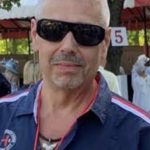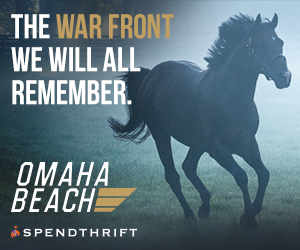The Sport of Kings was flush with excitement this past weekend. We had stakes galore, highlighted by The Holy Bull at Gulfstream, where three-year-olds tried to launch themselves into the Kentucky Derby picture. There were supporting stakes across the country featuring a nice assortment of promising runners. We had the National Handicapping Championship, from Las Vegas, receiving more media attention than ever before. It was all good and all positive for the game we love. There was something that happened; however, that was as significant to the sport as any of the above, especially to a true student of the game or lover of horse racing. And you know what? They missed it. I have heard not a word spoken about it, not a tweet, not a Facebook post, not an article, nothing. That is an injustice to the game.
Amidst the multitude of issues facing New York racing, especially winter racing, something occurred last Friday that brought me back to the glorious days of the past. Back when racing was prominent and led by powerhouse stables with competing homebreds and rivalries that lasted for years. Where horses raced often and with longevity, and without Lasix and other drugs they apparently can’t compete without today. When they were bred for not only speed but stamina and distance and soundness. Yes, something this past Friday on the cold and lonely inner dirt track at the Big A reminded me of those days past and they missed it.
The last race on the card looked like just another of the over saturation of New York bred maiden races run in the winter. It wasn’t, however. There was something that made this one a little different. A little special and nostalgic, if not historic. When the race ended with the right horse winning, so aptly and poignantly named, I could hardly believe it did not get a mention. After all, something pretty special in racing had been accomplished, by a pretty special man, and important part of the Sport of Kings. Not a word however. Even the media department at NYRA said nothing I heard. Maybe they missed it.
We heard a lot about how great Upstart was in the Holy Bull, and how he is a legit Kentucky Derby horse, albeit not from me. We heard plenty about the National Handicapping Challenge, and the feel good story about the 70 year old player who won it. A great feat and story indeed. After all, at 70, it is pretty tough to do many things, one of which is to travel to Las Vegas and take down a handicapping contest. That’s tough at any age. Congratulations are in order, given, and well deserved.
If it’s tough to do some things at 70, imagine how it must be at 102. Yes, 102. Many of us will never even get to find out, as it’s tough to make it to 102, let alone accomplish anything of significance at that stage of the game. Something was accomplished in the Sport of Kings last Friday at the grand age of 102.
The New York Bred Maiden Special Weight race had horses in it trained by Todd Pletcher, Bruce Levine, Richard Violette who also trained Holy Bull winner Upstart, Steve Asmussen, Gary Gullo, Tom Bush, John Hertler, Michael Dilger, and Gary Sciacca. A solid list of New York mainstays to say the least. None of them would get this purse; however, as this was reserved for the aptly named ridgling, Final Chapter.
Final Chapter was bred by his owner, John Nerud. At 102 years old, and still sharp as a tack, he has to be one of the oldest owners and breeders to win a race. If you are a fan or student of the Sport of Kings, and don’t know who John Nerud is, perhaps you should. After all he helped form and cultivate The Breeders’ Cup, put Florida breeding on a par with Kentucky and the rest of the country, if not the world, trained and bred record breakers, stakes winners and champions. He accomplished most, if not all of this, through his love and understanding of the breed, game, and sport without the benefit of the regal blue blood lines he so often beat.
Had I come from a “normal” family, I likely would not have known about John Nerud at such an early age. Much of his brilliant work was done just a tad before my time. I didn’t come from a normal family however, both my parents were race trackers. My Mom was at Belmont the day before I was born. Our breakfast and dinner tables were filled with talk of horses like Kelso, Carry Back, and the great Dr. Fager bred and trained by John Nerud. I learned about the horses, their feats and nuances and of course their connections. I was taught which bloodlines to look for in the slop, and which ones to look for in sprint or marathon races. Mr. Nerud and his horses were one of the things I was told about. Soon I would be lucky enough to see for myself.
John Nerud was the brains behind Tartan Farms, owned and operated by William McKnight. Tartan, with their flashy and well known tartan red silks, were one of the powerhouse stables back when powerhouse stables ran racing. It was the best time in the game as far as me, and most who were fortunate to be a part of it, feel. There were many, Phipps, Darby Dan, Cragwood, Rokeby, Greentree, Christiana, Buckland, Hunt, Hobeau, Harbor View, Elmendorf, Brookfield, Claiborne, Hickory Tree, Happy Valley, Locust Hill, Mill House, and so many others, ran by the wealthiest people in the world with a passion for breeding and racing the best. Tartan took a back seat to none of them under the leadership of Mr. Nerud. Most notably, however, was how he was able to do this with horses that were considered to be modestly bred or even obscure in comparison to what they were facing.
John Nerud knows horses. He was born on a ranch in Nebraska. He knew every aspect of the game and even had the book of jockey Ted Atkinson for a while. By 1949, he trained his first champion, Delegate, who was co-champion sprinter. He experienced it all, the good and the tough. He never won a Kentucky Derby but came as close as you can when Gallant Man lost to Iron Liege in 1957, after Bill Shoemaker misjudged the finish line. Later that year Gallant Man beat Bold Ruler in a record breaking Belmont Stakes. In 1959, he trained Intentionally, champion sprinter. In 1969 and 1970, he trained Ta Wee, also champion sprinter both years, and in 1978, Dr. Patches was co-champion sprinter.
Shortly after turning training duties over to his son Jan, he bred and raced the great Fappiano, a Met mile winner in 1981. Mr. Nerud remained the brains behind Tartan and their,by this time, world class breeding operation. Fappiano sired Kentucky Derby winner Unbridled, who started one of the most powerful sire lines we have today. I remember the day Fappiano won the Met. I waited all day at Belmont, I didn’t bet anything until that race. I bet all I had on Fappiano and Angel Cordero, who did not disappoint.
If you ask racing fans and strict gamblers who was the best horse they have seen, you will get a lot of different answers and a lot of different horses. When you ask horseman, and true students of the game, there is one name that comes up with greater frequency than most. More than Secretariat, Spectacular Bid, Ruffian, John Henry, Kelso, Forego and so many others. That name is Dr. Fager, the fastest horse ever. Dr. Fager was named for a Boston brain surgeon credited with saving John Nerud’s life following a fall from a pony. Not only is he the fastest ever but he is the only horse in history to hold 4 titles in one year, in 1968 he was Horse of the Year, champion handicap horse, champion sprinter and co-champion grass horse. Try that Wise Dan.
Dr. Fager raced 22 times, winning 18 of them. The only horses to ever finish in front of him were Champion Juvenile Male, Successor, Horse of the Year, Damascus, and Horse of the Year, Buckpasser. He was disqualified in the Jersey Derby however. He set the one mile world record for any surface under 134 pounds in the 1968 Washington Park handicap. The rivalry between Dr. Fager, Damascus, and Buckpasser is one for the ages and arguably the best ever in racing. If not for Frank Whitely’s use of the rabbit sprinter Hedevar in a 1 ¼ race, none of them may have ever beat the good Doctor. Not even Dr. Fager could maintain a sprinters pace for a mile and a quarter.
In the early 1980’s,Mr. Nerud helped develop the Breeders’ Cup we all enjoy today and sold the concept to horseman across the country. It was only fitting he have a Breeders’ Cup trophy of his own and in 1985 his homebred Cozzene, trained by son Jan, got him one. He also won the Eclipse for Outstanding Turf horse. He was elected to the Racing hall of Fame in 1972, won the Big Sport of Turfdom Award in 1968, and won The Eclipse of Merit in 2006. Under his guidance, in addition to a stellar broodmare band, Tartan stood Dr. Fager, Intentionally, In Reality, Hold Your Peace, Codex, and Smile. Unfortunately, there is no award on who left the biggest mark on the game, on the racetrack and in the breeding shed, John Nerud is a hands down finalist.
Mr. Nerud is, without question, a great horseman, but I suspect he is a great man too. A good friend of mine, Ray DeStefano, who himself is a race track story worth telling, recently shed some light on the man. As a teenager, Ray would sneak into Belmont to visit one of his favorite horses, Dr. Fager. Mr. Nerud was always gracious and friendly to him and showed him this great horse. Ray never forgot it and years later found himself living not very far from Mr. Nerud. Ray, during a remarkable career on the racetrack, assembled a collection of racing items that fall nothing short of museum worthy. He contacted Mr. Nerud to see if he would sign some Dr. Fager programs for him. It didn’t matter if Mr. Nerud remembered him or not, he invited Ray to his home, signed the items, talked horses and even showed Ray his trophy room. Class shows with people too, not just horses.
So something special did happen this past Friday at Aqueduct. A nondescript wintery day of racing, leading into a big weekend of stakes, hype, and a contest, saw a 3 year old chestnut ridgling, by Thunder Gulch, out of Comedy of Errors, by Colonial Affair, named Final Chapter broke his maiden. The owner was John Nerud, the breeder, John Nerud Revocable Trust, and the trainer was Mike Hushion. They missed it.
Update: Final Chapter turned out to be aptly named, he was John Nerud’s last winner. RIP.
High Five
It was nice to hear the interview with Irad Ortiz after the Forward Gal at Gulfstream on Saturday. When asked if he thought the horse he won on, Birdatthewire, wanted to stretch out and go further, he was honest and said no, he thought she was best at 7 up to a mile. Nice to see that kind of honesty and heads up from a young rider. When asked if he was surprised he was so far back he said no, he had studied the form and knew there was a lot of pace. High Five Irad.
Low Five
They missed it. All of ‘em.




